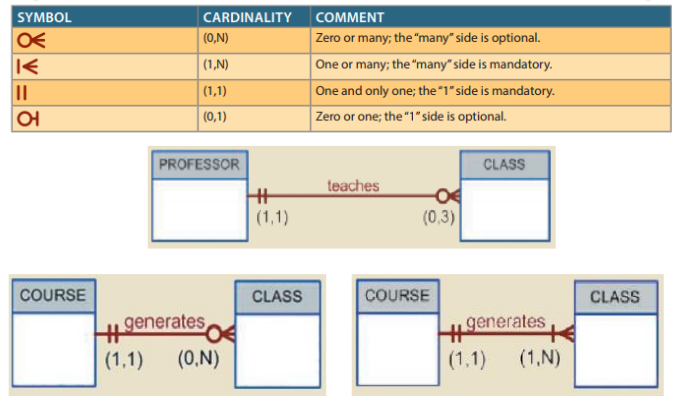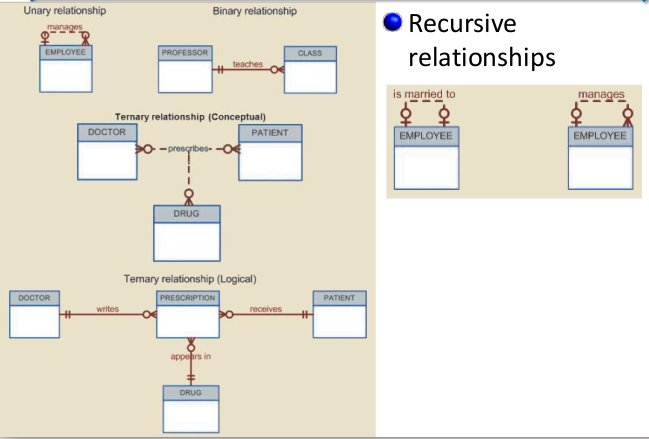ERM depicts the database's main components. Which includes;
Entities
An object of interest to the end userERM refers to a table row as an entity instance or entity occurrenceIn Chen, Crow's Foot, and UML notations, an entity is represented by a rectangle that contains the entity's nameThe entity name, is a noun, usually written in all capital letters
Attributes
Characteristics of entities e.g. STUDENT entity includes the attributes STU_LNAME, STU_FNAME, & STU_INITIAL etc
Relationships
Entities interactions







